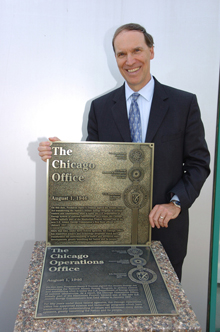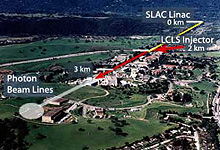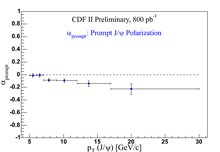 | Thursday, September 7, 2006 |
|
Thursday, September 7
Friday, September 8 Click here for a full calendar with links to additional information. |
|
Extended Forecast |
Secon Level 3 |
|
Thursday, September 7 -Southwestern Chicken Tortilla -Philly Style Cheese Steak -Garlic Herb Roasted Pork -Tomato Basil Chicken Parmesan -Southwestern Turkey Wrap -Assorted Slice Pizza -Marinated Grilled Chicken Cesar Salads |
|
Thursday, September 7 Dinner -Melon and Prosciutto -Pork Tenderloin w/Madeira Sauce -Vegetables of the Season -Marzipan Cake
Wednesday, September 13 |
| Fermilab Today is online at: http://www.fnal.gov/today/ Send comments and suggestions to today@fnal.gov Fermilab Today archive Hurricane Relief Page Fermilab Today PDF Version Fermilab Result of the Week archive Fermilab Safety Tip of the Week archive Linear Collider News archive Fermilab Today classifieds Subscribe/Unsubscribe to |
| Molecular movies | ||
|
|
News In Science, September 6, 2006: Physicists charged over strange quarks Scientists say they've solved a decade-old puzzle about the enigmatic 'strange quark', one of the fundamental building blocks of matter. Their findings, published recently in the journal Physical Review Letters, help put our understanding of the universe on a more solid footing.
Associate Professor Derek Leinweber from the University of Adelaide and colleagues used a combination of supercomputing and physics to study the oddly named particle.
|
| A charming mystery | ||
| ||
|
Quantum chromodynamics has a hard time describing how charm-anticharm
mesons (called "J/ψ" mesons) are made at the Tevatron. In the 1992-1996
Run I of the Tevatron, production of the J/ψ, an unstable particle which
can be cleanly measured through its decay to two muons, was measured by CDF to be
ten times larger than had been predicted. A new theory called NRQCD was developed to
explain this phenomenon, but it only holds true if the spin of high transverse momentum J/&psi's
points in the same direction as their motion. Unfortunately, Run I didn't
have enough data to measure this spin and confirm whether NRQCD had solved
this production mystery.
Now with a Run II dataset of 1 million J/Ψ events, and an excellent measurement of the muon acceptance from J/ψ decay, CDF has measured this J/ψ spin orientation with enough precision to test the theory. Including measurements for J/ψ's with transverse momentum greater than 15 GeV/c, these tests probe deeply into the theoretical regime. The results disagree completely with NRQCD predictions. J/ψ mesons produced at high transverse momentum prefer a spin alignment perpendicular to their line of flight. This agrees with a different model for J/ψ production, inspired by the exchange of a hypothetical particle with no charge called a Pomeron. CDF is now measuring the spin orientation of the ψ' (excited cc) and Υ (bb) mesons to see if the new theory continues to describe the data. If the results hold up, a new door will be open into understanding how these kinds of particles are produced in proton-proton or proton-antiproton interactions. | ||
 |
||
| From left: Kwangzoo Chung, Min Jeong Kim, James Russ (all from Carnegie Mellon University).
*Graphic at top shows the spin orientation parameter α as a function of the transverse momentum (PT) of the J/ψ meson. Mesons with spin aligned parallel/antiparallel to their line of flight have α = +1, while those with perpendicular spins have α = -1. Unpolarized mesons have α = 0. | ||
| Result of the Week Archive
|
|
NALWO Picnic NALWO will hold a fall picnic on September 15, from 5:30 to 8:00 p.m. just outside the Kuhn Barn. Meet friendly lab families and join us for an evening of supper and games. Children are welcome; each family gets a Fermilab Frisbee. Please bring food to grill, and a dish to share among 8 people, such as a casserole, salad or side dish. NALWO will provide charcoal grills, plates and cutlery, soft drinks and desserts. For additional information, contact the Housing Office, 630/840-3777 or housing@fnal.gov; Rose Moore, 630/208-9309 or Christiane Albrow, 630/717-8906.
Fermilab Folk Club Barn Dance
International Folk Dancing |


